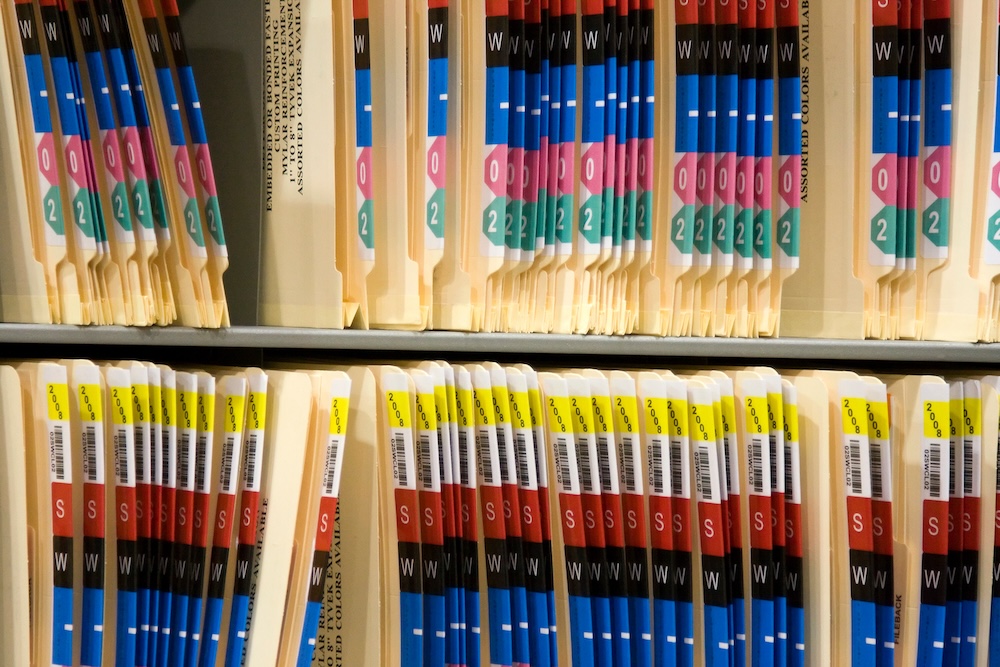The Reality: AI in Healthcare Is Only as Smart as the Data It Can Read
AI is transforming healthcare. From AI language bots summarizing documentation to predictive analytics, modern Electronic Health Records (EHR) platforms are trying to integrate AI-driven solutions to enhance efficiency and patient outcomes. But few are talking about the fundamental gap that still exists for providers—AI can only analyze what it can access, and much of today’s healthcare data is still trapped in paper-based or unstructured digital document formats.
Despite significant investments in digital healthcare platforms, many organizations still rely on analog faxing, paper scanning, and employees manually indexing files or entering details, just to get patient data into the core EHR system. This means that a substantial portions of patient information live on in unsearchable PDFs, unstructured file repositories, or legacy file folders — all unusable for AI-driven insights.
Before healthcare organizations can realize the full potential of AI and data-driven decision-making, they must address multiple digital migration challenges. The first being digitizing, structuring, and optimizing document workflows at the point of intake.

The Hidden Roadblock: Legacy Intake Processes
The reality in many healthcare systems today is that:
- Faxes remain a primary chokepoint of document intake, with legacy fax lines feeding paper-based workflows, due to drastically lagging federal guidance on approved transmission modalities that are HIPAA compliant.
- Multifunction printers (MFPs) and scanners are often under-utilized due to staff not realizing intelligent document processing capabilities now exist; perpetuating the problem of static PDFs that lack searchability and then require manual employee intervention.
- Historical patient records sit in paper archives, making retrieval and integration into digital workflows slow and inefficient.
The result? AI-enhanced healthcare systems are missing critical data simply because the information isn’t formatted in a way that AI can process or even access.
The Solution: Digital Transformation at the First Touchpoint
To truly prepare for an AI-driven future, providers should follow patient document workflow backward, to the moment patient data enters the ecosystem. Then progressively modernize and digitize those core processes today, to ensure AI can be fully embraced and utilized at the next stage.
At Modern Office Methods, we help healthcare providers eliminate the inefficiencies of non-optimized intake processes through assessments and implementation of:
- Encrypted Digital Fax Solutions – Automatically converts inbound faxes into text-searchable PDFs, eliminating paper-based bottlenecks and the redundant scanning/indexing processes employees may be handling today.
- Advanced Document Scanning with EHR Integration – Our Canon and HP solutions integrate directly into leading EHR systems like Epic, reducing the steps needed to upload structured records.
- OCR-Enabled Capture at the Device or Server Level – Converts incoming documents into searchable, indexed digital files in real-time, making them instantly AI-compatible.
- Backlog Scanning & Digital Archiving Services– Convert decades of patient-based or employee-based records into structured digital formats to ensure easy retrieval and AI accessibility.
The Competitive Advantage: AI Readiness Starts with Data Infrastructure
Healthcare leaders understand that data-driven decision-making is the future. But without structured, AI-compatible documentation, even the most advanced AI tools will struggle to provide meaningful insights.
By investing in smart document workflows now, organizations can:
- Ensure AI-tools can access complete, structured patient records for more accurate insights.
- Reduce administrative burden, time and cost by automating document classification and data entry.
- Enhance compliance with HIPAA, and rapidly evolving data security requirements.
- Improve patient outcomes by mitigating the time/errors that occur in manual document processes.
Conclusion: The First Step in AI-Driven Healthcare is Fixing Document Workflows
AI is transforming healthcare, but its success so far is clearly dependent on clean, accurate, and accessible data. Organizations that don’t modernize their document workflows and foundational document infrastructure near-term, will struggle to fully implement AI or recognize its full value long-term. AI thrives on seamless data integration, requiring digitized, structured information, and offers the potential to pay substantial dividends in the effortless syncing of information both to and from EHR/EMR systems.
At Modern Office Methods, we help healthcare partners bridge the gap between overlooked processes, outdated infrastructure, and the digital document systems needed for AI readiness. So if your organization is considering new AI investments, let’s not miss the opportunity for a discussion with MOM now; that can help optimize integration, better align your existing spend, and build an AI-ready foundation.
About Modern Office Methods (MOM)
Modern Office Methods has helped businesses navigate their document challenges for over 60 years. They offer Production Print Solutions, Managed Print Services, Software Solutions and IT Services to help enhance their customers’ business processes while reducing expenses.
For the latest industry trends and technology insights visit MOM’s main Blog page.



Leave A Comment
You must be logged in to post a comment.